Christine and Geoff Williamson led a nature walk at Montrose Point in Chicago's Lincoln Park, with 19 people joining their outing. The temperature was 70 degrees Fahrenheit with light winds from the southwest and mostly cloudy skies. We kept lists of various groups of creatures that we encountered. You'll find these at the end of this web page. All told, we had 38 bird species, three mammal species, and five species of butterflies.
Montrose Point is a great place for viewing the migration of birds, and it is part of the Chicago Lakefront Birding Trail.

The southbound fall migration had already begun by the time of the walk with various shorebird species showing up on Montrose Beach. After gathering at the Montrose Beach house, we first visited the beach itself to look for these migrant shorebirds, along with the summer resident gulls and terns.
Both adult and juvenile Caspian Terns were flying about. Here is one of the adults resting on the beach. The Caspian Tern is the largest species of tern in the whole world.

There were six species of shorebirds on the beach. One of the first that we saw was the Semipalmated Plover.
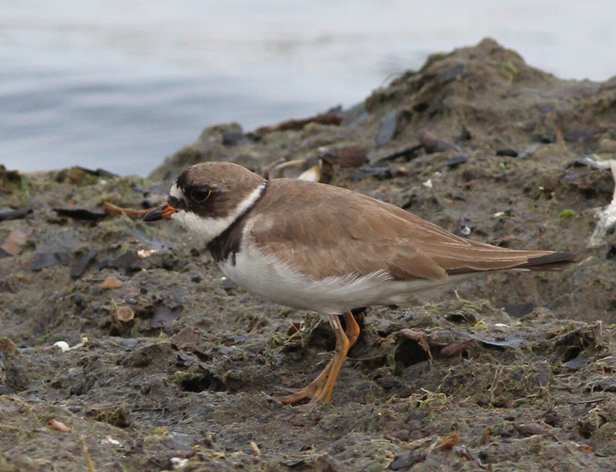
We watched the plovers move about in their characteristic style, holding their heads up in a rather erect posture, walking forward quickly and coming to an abrupt stop. This is a consequence of their manner of foraging, which is to locate prey by sight and move quickly over to it to pick it off the ground. If you look carefully at this bird, you can see the semi-palmations between the toes that give the bird its name.

Here's a close up shot making it easier to see the partial webbing (the semi-palmations) between the toes.
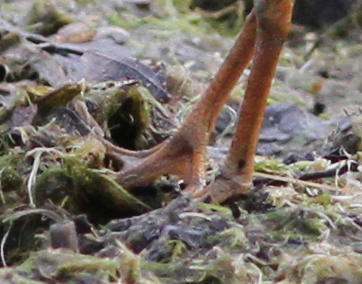
There were two "peep" species on the beach: the browner Least Sandpiper and the grayer Semipalmated Sandpiper. The Least Sandpiper on the left is in its first, juvenile plumage, with freshly grown feathers neatly arranged and all in nice rows. The Semipalmated Sandpiper on the right is sporting adult plumage, with feathers in differing conditions of wear and a more motley look to it.
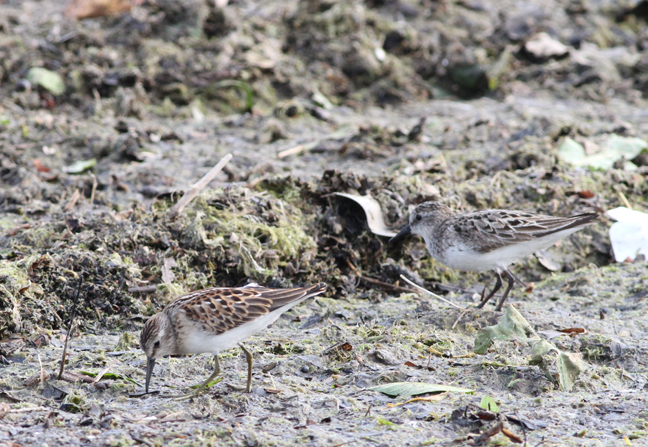
The Least Sandpiper is the smallest kind of sandpiper in the world. The Semipalmated Sandpiper is also small, but you can see in these photos that it is ever so slightly larger than the Least.
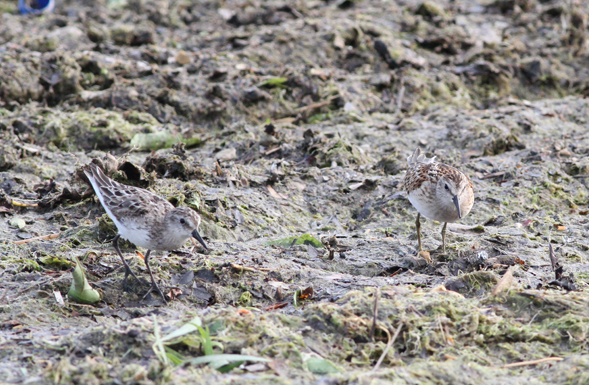
Here is another view of the Least Sandpiper. Notice that we have a good look here at its feet and toes. Any semi-palmations? Nope! Among the peeps, only the Semipalmated Sandpiper and the Western Sandpiper have the partial webbing between the toes.
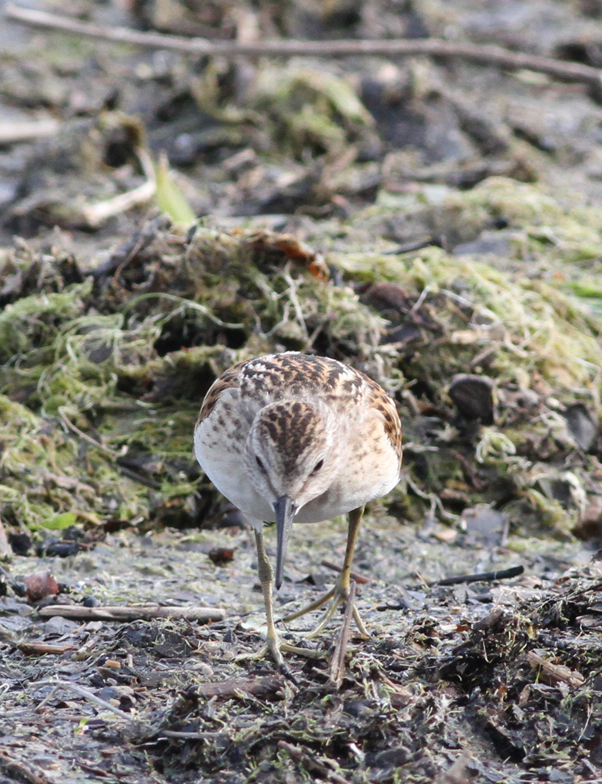
Here is a close look at one of the Semipalmated Sandpipers. This adult has a bunch of worn feathers that are part of its breeding plumage, the plumage that it has been wearing for a number of months now. These are the darker feathers with blackish centers that you see on the upperparts. It also has some winter plumage feathers coming in. They are the gray ones with the narrow dark streaks down the center of the feather. And also note the semi-palmations!
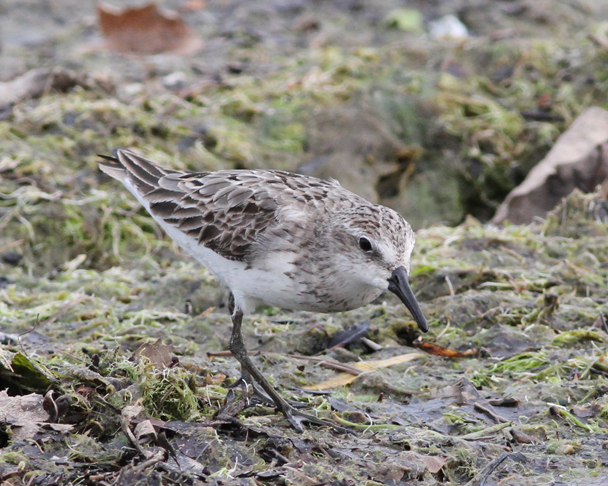
Here are close-ups of the legs and feet of the Least and Semi, to let you see the difference in lack or presence of the partial webbing. Also notice that the legs and feet of the Least are yellowish, while those of the Semi are blackish.
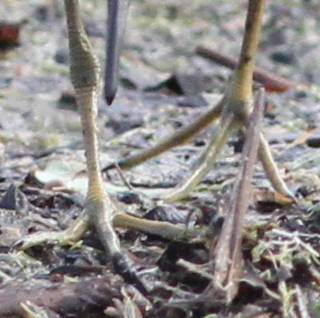
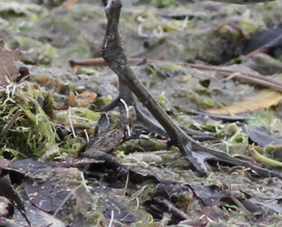
Most of the shorebirds on the beach were Sanderlings. All the Sanderlings were adults. See the mix of older reddish brown breeding plumage feathers and newer gray winter plumage feathers on this guy?
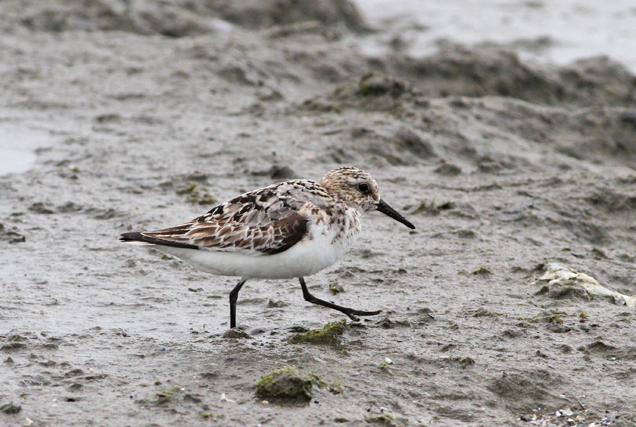
Foraging for insects in the air space over Montrose Beach were six species of swallows. We got pretty good looks at all of them, except for the one Tree Swallow that was present. Here, three Northern Rough-winged Swallows are sitting on one of the ropes that cordon off sections of the beach vegetation. You can see the rusty brown wing bars on these birds that indicate they are juveniles born this season, possibly right there at Montrose Point.
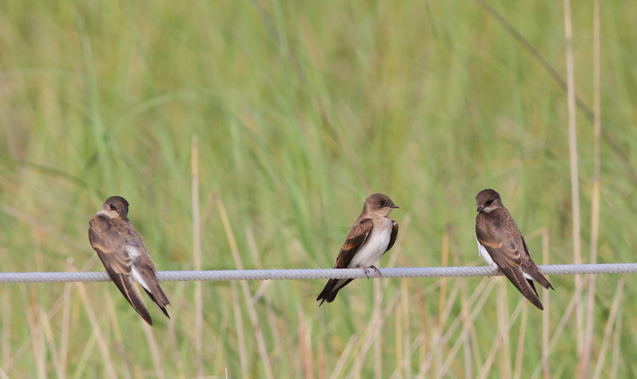
The vegetation on the beach was where this Song Sparrow chose to set up its nest. The ropped off areas enable birds to go about building nests, laying eggs, and raising young with less interference from the large numbers of people that recreate on Montrose Beach.

Part two of our morning outing was spent in the Montrose Point Bird Sanctuary.
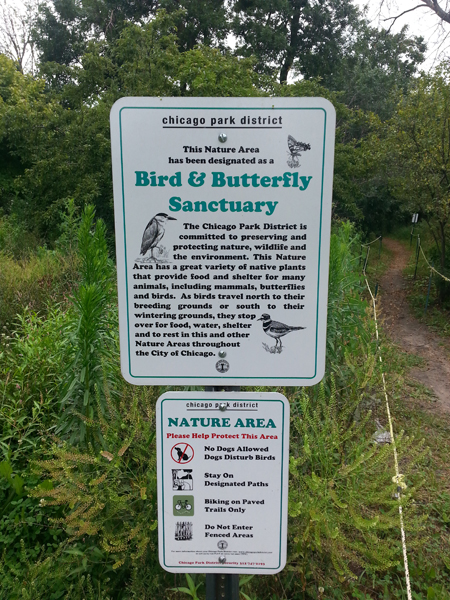
Once just open lawn with a few scattered trees and of course the Magic Hedge, the designation of the site as Montrose Point Bird Sanctuary led to habitat restoration efforts that created a more bird-friendly environment.
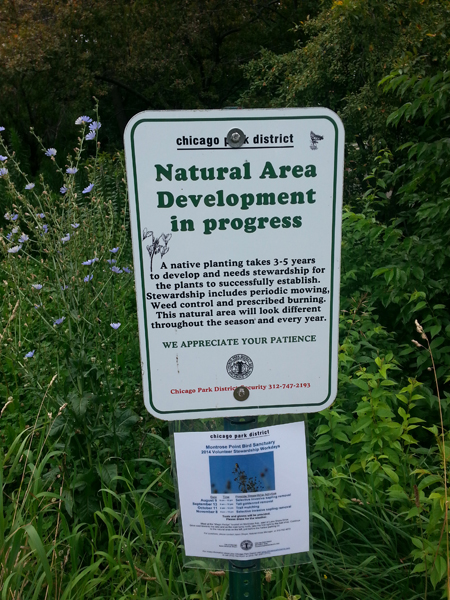
The area now supports a much greater diversity of breeding birds, such as this Common Grackle that we saw.
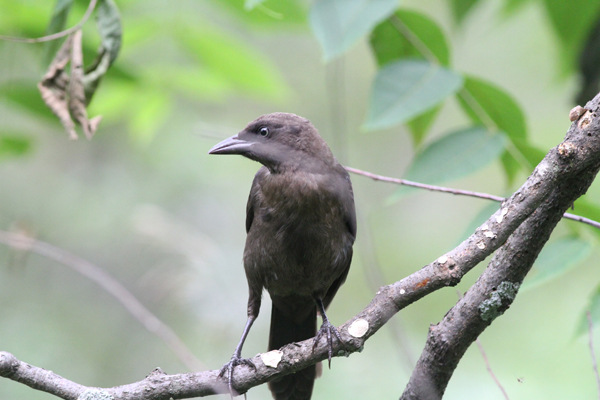
Eastern Chipmunks have colonized Lincoln Park as well, and they are now abundant in the Montrose Point Bird Sanctuary whereas twenty years ago they weren't there at all.
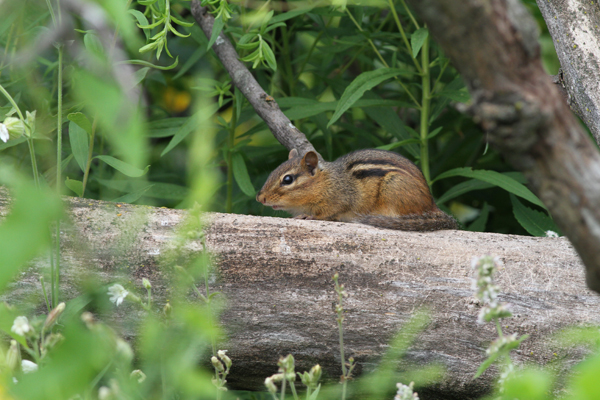
Another mammalian resident is the Eastern Cottontail, here eating a Wild Carrot (Daucus carota) as pointed out by Laurel Ross.

This rabbit was hosting a number of ticks, with at least five on its right ear, including the big one in back, and one more attached to its right cheek.
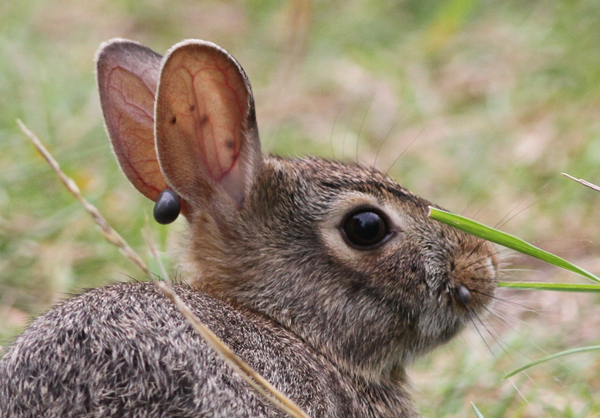
At the end of the walk, Chris used the Chicago Birding Trail map to point out past and future locations for the Chicago Ornithological Society / Sierrra Club series of nature hikes and bird walks.
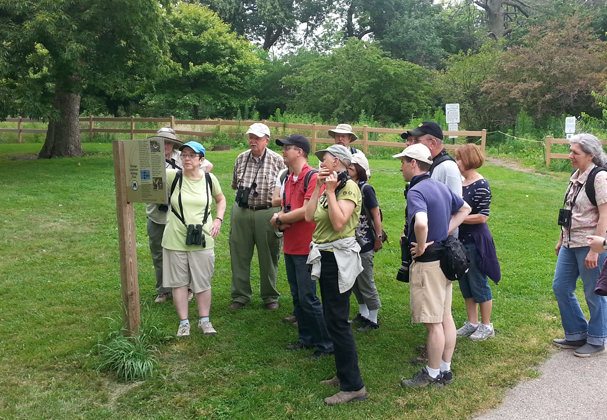
Now for the lists....
List of birds species, with number observed.
Canada Goose 5
Mallard 7
Double-crested Cormorant 96
Great Blue Heron (Blue form) 1
Semipalmated Plover 3
Killdeer 4
Spotted Sandpiper 6
Sanderling 42
Least Sandpiper 1
Semipalmated Sandpiper 8
Ring-billed Gull 150
Herring Gull (American) 2
Caspian Tern 12
Chimney Swift 30
Ruby-throated Hummingbird 1
Downy Woodpecker 3
Least Flycatcher 1
Eastern Kingbird 2
Warbling Vireo 2
Northern Rough-winged Swallow 70
Purple Martin 35
Tree Swallow 1
Bank Swallow 5
Barn Swallow 55
Cliff Swallow 4
Black-capped Chickadee 7
American Robin 21
Gray Catbird 2
European Starling 94
Cedar Waxwing 9
Yellow Warbler 2
Song Sparrow 1
Northern Cardinal 3
Red-winged Blackbird 11
Common Grackle 20
House Finch 35
American Goldfinch 9
House Sparrow 39
List of mammal species, with number observed.
Eastern Chipmunk 12
Eastern Gray Squirrel 5
Eastern Cottontail 5
List of butterfly species, with number observed.
Eastern Tiger Swallowtail 1
Cabbage White 58
Orange Sulphur 2
Spring Azure 5
Monarch 3
Back
to Geoff Williamson's Web Pages.
This
page was last updated on 26 July 2014.
Contact Geoff Williamson
with any comments, updates or suggestions.